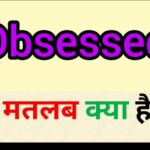For what in hindi: The seemingly straightforward question “for what?” holds a surprisingly intricate depth in Hindi. While the direct translation might be “क्या के लिए?” (kya ke liye), understanding the true essence of this phrase requires venturing into the heart of Hindi’s unique grammatical structure and cultural nuances.
Unlike English, Hindi uses different prepositions depending on the specific meaning you want to convey. Here’s a breakdown of common prepositions that translate to “for” and their usage:
- के लिए (ke liye):This is the most versatile preposition, expressing purpose, reason, direction, destination, benefit, and recipient. Example: “यह फल तुम्हारे लिए है” (yeh fal tumhare liye hai – this fruit is for you).
- को (ko):This preposition indicates the recipient of an action or object. Example: “मैं इस पत्र को अंकल को दूंगा” (main is patra ko uncle ko doonga – I will give this letter to uncle).
- से (se):This preposition signifies the source, material, instrument, or cause. Example: “यह घर लकड़ी से बना है” (yeh ghar lakdi se bana hai – this house is made of wood).
- पर (par):This preposition denotes location, surface, dependence, or emphasis. Example: “किताब मेज पर है” (kitab mez par hai – the book is on the table).
Beyond the Basics: Unveiling Layers of Meaning:
Knowing the right preposition is just the beginning. “क्या के लिए?” can take on several meanings depending on the context:
- Purpose or reason:“मैं कक्षा के लिए तैयार हो रहा हूँ” (main kक्षा ke liye taiyar ho raha hoon – I am getting ready for class).
- Benefit or advantage:“वह गरीबों के लिए काम करता है” (woh garibon ke liye kaam karta hai – he works for the benefit of the poor).
- Destination or direction:“ट्रेन दिल्ली के लिए रवाना हुई” (train Delhi ke liye ravana hui – the train departed for Delhi).
- Exchange or comparison:“मैंने उसे किताब के लिए पैसे दिए” (maine use kitab ke liye paise diye – I gave him money for the book).
- Desire or intention:“वह एक बड़ा घर चाहता है” (woh ek bada ghar chahta hai – he wants a big house).
Cultural Nuances: The Unspoken Language:
The cultural context plays a crucial role in understanding “क्या के लिए?”. Knowing the relationships, social structure, and norms can help identify the true goal of the investigation. For example, when an elder asks a younger person “क्या के लिए?”, It could not be literal, but rather a way to convey concern or give guidance.
Idiomatic Expressions: Adding Spice to the Conversation:
Dive deeper into the cultural flavor of Hindi by exploring idioms and proverbs using “क्या के लिए?”. Examples include:
- “पानी के लिए तरसना” (pani ke liye tarsana – to thirst for water) – to desperately desire something.
- “खून-पसीना एक करना” (khoon-pasina ek karna – to put in blood and sweat) – to work hard for something.
- “हवा में बातें करना” (hawa mein baaten karna – to talk nonsense) – to engage in meaningless conversation.
Mastering the Art of “क्या के लिए?”:
Understanding the multifaceted nature of “क्या के लिए?” goes beyond knowing the vocabulary. Here are some tips:
- Pay attention to the context:The surrounding conversation, situation, and relationship determine the meaning.
- Use the appropriate preposition:Choosing the right preposition conveys the precise nuance.
- Be mindful of cultural implications:Understand the unspoken social cues and meanings.
- Don’t be afraid to ask:If unsure, clarifying the intent behind the question is always appreciated.
Exploring Further:
This article merely scratches the surface of “क्या के लिए?”. If you want to fully experience its richness, think about seeing Hindi films, listening to Hindi music, and having talks with native speakers. Remember, fluency thrives on practice and cultural understanding!
By unlocking the layers of “क्या के लिए?”, By speaking Hindi well, you can establish stronger connections and broaden your understanding of the language and culture. For what in hindi








